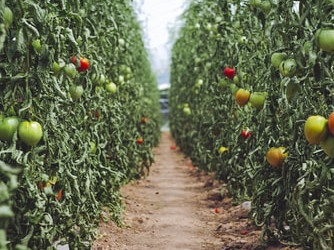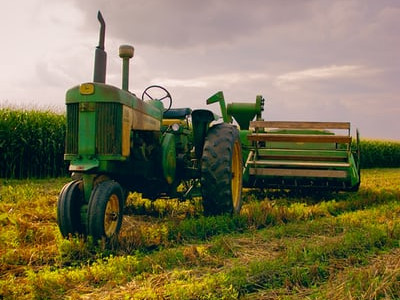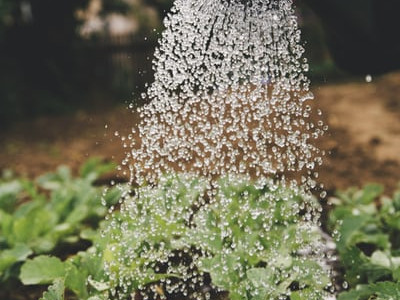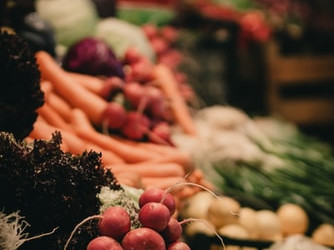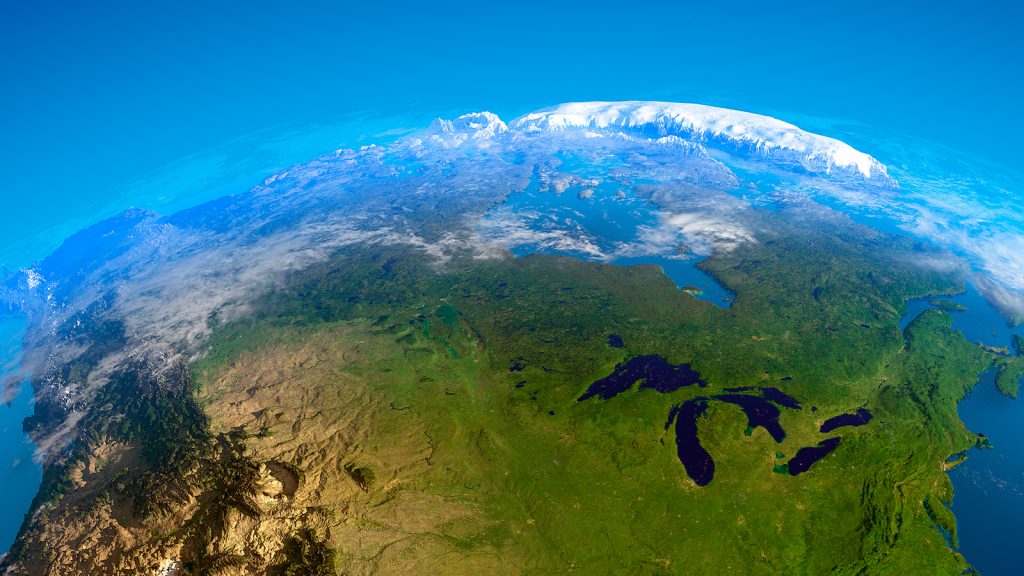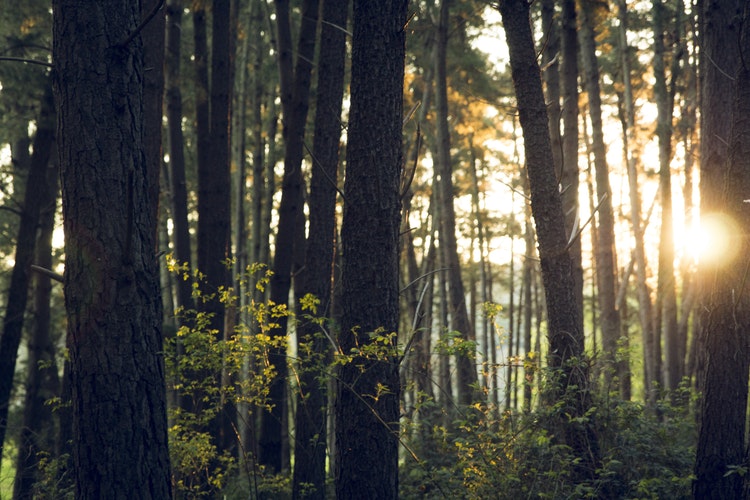Making the Case for a Small Farm Future
For a good stretch of the last 20 years, I’ve tried as best I can to be a small-scale farmer. The results have varied from the worthwhile to the hapless, always constrained by a world geared to treating the efforts of farmers in general, and small-scale farmers in particular, with indifference at best. But my story isn’t about those efforts, or that indifference. Instead, it considers what may be impelling humanity toward a small farm future; what (in broadest outline) that future might look like; and the forces that may deliver it—or something worse.
Still, let me start that journey with my feet on my farm. When people visit it, I notice three main responses. One is an unbidden enthusiasm for the rural paradise we’ve created, the beauty of the place, and our great good fortune in avoiding the rat race and producing honest food from the land. Sometimes the words are spoken and sometimes I only see it in their eyes, but the sentiment that usually accompanies it is: “This is great. I wish I could do something like this, but I can’t because—”
The second response takes in our rustic accommodation, the compost toilets, the rows of hard-won vegetable beds, the toolshed speaking of the work to be done, the reek of manure and compost with a kind of recoiling pity. It seems to say: “You went to graduate school and got a well-paid job. Then this. How did it go so wrong?” Or the more actively disdainful: “Each to their own. But nobody wants to farm any more. All that backbreaking work!”
The third response is that of the harsher critic, whose gaze homes in on specifics—the tractor in the yard, the photovoltaic panels on the roof, the tilled beds in some of the gardens. “Look how tied in you are to the global fossil fuel economy and its cash nexus.” This critique comes from both sides of the green divide. “You haven’t properly escaped and found a truly natural way of life,” from one side. “You talk about sustainability, but you’re no better than the rest of us. Besides, small farms like this can’t feed the world,” from the other.
I begin with this story because I’m going to be arguing not only that, yes, small farms like this can feed the world, but also that in the long run it may only be small farms like this that can. Therefore, I’m going to have to address the other criticisms—the compromises with the status quo, the low prestige and toil associated with an agrarian life, the global flight from the land. So I have a lot of work to do in these pages. One thing that encourages me is that, of the three responses I mentioned above, the first seems much the commonest—it simply isn’t true that nobody wants to farm.
But people aren’t willing to farm under just any circumstances. Too often, farming is still a life of unrewarded toil, not because that’s intrinsically how it has to be but because farming is, as it were, the engine room of every society—including our present ones—where the harsh realities and dirty secrets of how it achieves its apparently effortless motion are locked away below decks. I argue here that they need to be unlocked and shared more widely. But for now my visitors who say, “I can’t because . . .” are correct. A congenial small farm life is a viable option for few—not for the massed ranks of the employed, unemployed, or underemployed in the cityscapes of the world, and not for its multitudes of rural poor, who can scarcely make a living from the land. But in both cases the dream of the small farm lives on, and that’s an important place to start.
Of course, it’s only a place to start, and a sketchy one at that. Notions of the agrarian good life are commonplace around the world, but often they figure as little more than bucolic symbols, empty of pragmatic content. They seem to lack the power of the urban case for supremacy, which has deep historic roots. City, citizenship, civilisation, civility: so much that we value about our world shares an urban etymology. But if we want to build good lives on lasting foundations for the future, the time has come to abandon the unilluminating oppositions of city versus country and factory versus farm, as well as associated oppositions like progress versus backwardness.
Regrettably, that’s not how public debate seems to be going. There’s a veritable industry of opinion-formers laying their bets only on the first half of those dualities and exhorting us to be “optimistic” about a future presented as urban, capital forming, high-tech, and non-agrarian. This neo-optimist or progress-literature often invokes recurrent myths of human technological problem-solving as an inspiration for transcending present problems. Take, for example, London’s Great Horse Manure Crisis in the 1890s, where it’s said that people feared the proliferation of horses would bury the streets under their faeces, only to find horses were soon displaced by non-defecating motor vehicles. Or take the idea that fossil fuels saved the whales when kerosene-burning lamps displaced demand for whale oil.1
I call these myths partly in the everyday sense that they’re untrue. There never was a Great Horse Manure Crisis in the 1890s. And it was the industrialised whaling of the 20th century powered by fossil fuels that really put whales in danger.2 But they’re also myths in the deeper sense that they’re mystifying and oversimplifying stories that reveal cultural self-conceptions. The self-conception of our modern culture that’s revealed in these myths is that the problems we face are discrete, technical ones with one-shot solutions.
These stories are mystifying because they tell tales of fossil fuel–based solutions to predicaments in the past at a point in our current history when fossil fuels present us with problems for which there are no obvious solutions. Right now, we need more than banal assertions that someone’s bound to think of something. And they’re oversimplifying because human capacities for technical innovation aren’t in doubt. What’s in doubt is the human capacity to find purely technical solutions for a plethora of current economic, political, cultural, ecological, biological, and geophysical problems with complex, interrelated feedback loops exhibiting imperfect information in real time.
In my book I try to provide a different narrative that’s less impressed with techno-fixes or dominant notions of civilisational progress. I don’t deny that our contemporary civilisation has its successes. But it has its failures, too. I see it in the eyes of those visitors to my farm—who in material terms must surely count among the richest people in the world, ever—which betray a life diminished, trammeled by too many of the wrong kind of obligations. More importantly, I see it in the fact that the world we live in today is just about the most unequal one ever, where somewhere between 800 million and 2.5 billion people are physically undernourished, about as many (or more) than the estimated 800 million population of the entire planet in 1750 at the dawn of the modern age.3
These undernourished people haven’t missed out on progress, but in large measure are its victims. If global industrial civilisation ever had the capacity to lift the poor and undernourished people of the world to something like the standard of living we experience in the richer countries, the chances of it doing so now have been extinguished in the face of the numerous internal and external threats that have emerged globally during the questionable march of modernisation. So I’d counter the neo-optimist view that the world’s problems can be solved with high-tech fixes delivered by the reigning capitalist economy, not with pessimism but with an alternative optimism—an optimism that this reigning economy won’t endure much longer, and will be succeeded by something that offers a better future.
The better future I write about here is a small farm future. I’m not completely optimistic that it’s the future we or our descendants will see, but for the numerous reasons set out in the book I think it’s our best shot for creating future societies that are tolerably sustainable in ecological terms and fulfilling in nutritional and psychosocial ones. Now is a key moment in global politics where we might start delivering that future, but also where more troubling outcomes threaten. Here I try to herald the former by sketching what a small farm future might look like, and how we might get there.
The small farm isn’t a panacea, but what a politics geared around it can offer—what, perhaps, at least some of the visitors who come to our farm can glimpse in outline—is the possibility of personal autonomy, spiritual fulfillment, community connectedness, purposeful work, and ecological conviviality. Relatively few farmers past or present have enjoyed these fine things. Throughout the world, there are long and complex histories by which people have been both yoked unwillingly to the land and divested unwillingly from it in ways that are misrepresented when we talk of agricultural “improvement” or progressive “freedom” from agricultural toil. The improvements haven’t been an improvement for everyone, the freedom hasn’t been equally shared, the progress has landed us in a whole raft of other problems that we must now try to overcome. And none of it was preordained.
That’s why it’s urgent at this point in history to think afresh about a small farm future. Taking each of the three words in reverse order, we need to think about the future, because it’s clear that present ways of doing politics, economics, and agriculture in much of the world are reaching the end of the line. Wise authors avoid speculating on future events because time usually makes their words look foolish, but such dignity isn’t a luxury our generation can afford. We need to start imagining another world into being right now.
Modern thinkers have coined numerous terms for the way we now live to distinguish it from the past: the affluent society, the effluent society, industrial society, post-industrial society, Industria, consumer society, postmodern society, the information society, the virtual society. These all capture something significant about our times, but they too easily allow us to forget that, in fact, our modern societies are agrarian societies, just like almost all other human societies over the past few thousand years. Humanity today relies heavily on just three crops—wheat, rice, and maize—all of which had been domesticated by about 7000 BCE, and which are still mostly grown using techniques whose basic outlines would be instantly recognisable to any ancient farmer. Despite the recent hype over industrially cultured nutrients, the future we face is probably a farm future.4
Computers nowadays have millions of times more processing power than the ones available just 50 years ago, whereas average global wheat yields are less than nine times higher than those achieved in the Roman Empire.5 In dimensions that matter most to our continued existence, we’re less distant from our ancient counterparts than we sometimes think. And the agricultural improvements that we’ve achieved since those times have often come through processes that draw down on non-renewable sources of energy, soil, and water while imperiling climate and ecological stability.
Whether individually we farm or not, almost all of us ultimately are farming people. In fact, there are more farmers in the world today by formal definition—somewhere between 1.5 and 2 billion—than at almost any point in history.6 There are good farmers and bad farmers. The best ones learn to produce what’s needed with a minimum of effort, without compromising the possibilities of their successors doing the same or losing sight of their obligations as members of communities. It’s about time we started trying to tell the story of our world from their perspective—not a story of how we transcended agriculture, because we never did, but of how we might transfigure it, and ourselves in the process, to deal with the problems we now face.
I don’t think I have much to teach other people about how to farm, nor do the precise techniques that are used from place to place seem the most important focus of attention. But I am a farmer, and so are you if you grow any of your own food or fibre or would like to increase your community’s capacity for self-provisioning.
It’s the importance of this local self-provisioning that turns a farm future into a small farm future. I’m not suggesting there’s no place in the future for any larger farms, or that large-scale farmers are always the bad guys. In itself, small isn’t necessarily beautiful and I won’t be proposing any cutoff points by acreage to define the small farm. Small farms play a key role in creating local autonomies from global flows of capital; they involve a degree of self-provisioning at the individual, household, or local level; they employ labour-intensive techniques applied more often by family or household labourers than salaried workers; they adjust their activities to sustain the ecological base in their locality that underpins their productivity; and they tend to operate in a de-commodifying (but not necessarily un-commodified) way compared to large farms.
“Local” or “locality” looms large in many of those features, perhaps merely displacing the need to define the “small” into a need to define the “local.” Again, on this point I refuse hard and fast delineations. The local isn’t a matter of prior definition but emerges out of how autonomies and self-provisioning are achieved in practice. One thing I can say for sure, though, is that the small farm future I’m describing isn’t the same as a green consumerism future, where shoppers with lives much like the ones most people lead in rich countries today buy their food in stores like the ones they shop in today, except that the food is more local, more sustainable, more organic or whatever—and where, like today, people spend time fruitlessly arguing about whether local really is more sustainable. Instead it’ll be a future where you or your descendants are trying to figure out how to furnish your needs from your locality, probably by furnishing many of them for yourself, because you have few other choices.
For some, that may sound too dystopian, apocalyptic, or declinist. There certainly may be some dystopian or apocalyptic futures awaiting us unless we play our present hand of cards with skill. But a small farm future only represents a decline from the large farm present if you consider the latter to be a lofty civilisational summit to which humanity has laboriously climbed. That’s a view I resist. If we play our cards well, the small farm future I describe here could make for a much more congenial life for most of the world’s people than the one they experience today. But we do need to play them well. This is a time in history to be open to a fundamental rethink of how we organise ourselves globally. Too much of our present futurology aims to double down on existing technical and social logics, and dismiss radical alternatives out of hand. At the same time, there’s a good deal of received wisdom in the alternative agriculture and alternative economics movements that could use more critical scrutiny.
I don’t claim to have fully achieved that rethink here, or to have produced a thoroughly worked out alternative. The idea of a small farm future is so marginal and ill-developed within contemporary thought that at present merely laying out its broad outlines is a daunting enough task. So I offer this book as a kind of critical introduction, a way of starting to organise thinking about what a widespread turn to agrarian localism might look like. This seems worth doing because even though the idea of a small farm future is currently marginal to mainstream thought, it’s probably the best future now available for most of humanity, and we don’t seem to be discussing the implications of that nearly seriously enough.
The above excerpt is from the Introduction to Chris Smaje’s new book, A Small Farm Future: Making the Case for a Society Built Around Local Economies, Self-Provisioning, Agricultural Diversity and a Shared Earth (Chelsea Green Publishing, October 2020) and is reprinted with permission from the publisher.
References:
- See, for example, Aaron Bastani, Fully Automated Luxury Communism (Verso, 2019); John Browne and Jason Hickel, “Should We Pursue Boundless Economic Growth?” Prospect, June 12, 2019: 30.
- Daniel Francis, A History of World Whaling (Toronto: Viking, 1990); Merrill Gosho et al., “The Sperm Whale,” Marine Fisheries Review, 46(4) (NMFS/NOAA, 1984), 60–64; Rose Wild, “We Were Buried in Fake News as Long Ago as 1894,” The Times, Jan. 13, 2018.
- Food and Agriculture Organization of the United Nations (FAO), n.d.; Jason Hickel, The Divide (London: Penguin Random House, 2017); Eric Holt-Giménez, “Capitalism, food, and social movements: The political economy of food system transformation,” Journal of Agriculture, Food Systems, and Community Development (2019); Branko Milanovic (2016); UNICEF, The State of Food Security and Nutrition in the World 2018 (Sept. 2018).
- See Oliver Morrison, “‘Cultured Meat Is Fool’s Gold’: Environmentalists Lock Horns over Controversial Documentary,” Food navigator.com, Jan. 10, 2020.
- FAO n.d.; Vaclav Smil, Energy and Civilization: A History (Cambridge, Mass.: MIT Press, 2017).
- International Labor Organization, n.d.; Miguel A. Altieri and Peter Rosset, Agroecology: Science and Politics (UK: Fernwood Publishing, 2017).



